Scientific Council
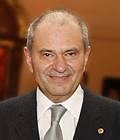
Chair
Alexey Gvishiani
The main scientific results of A. D. Gvishiani: the theory of stability of dynamic classifications for geological and geophysical problems, systems clustering methods and recognition of abnormal areas on time series, discrete mathematical approach to the evaluation of magnetic activity, the family of voting algorithms to detect possible locations of strong, significant and strongest earthquakes, which allowed the places of several destructive earthquakes in our country and abroad to be determined in advance. He revived and initiated the active development of the Russian segment of INTERMAGNET observatories in Russia and CIS countries. He supervised 3 corresponding members of the Russian Academy of Sciences, 3 post-doctoral researchers and 14 Ph.D. students.
A. D. Gvishiani is Chief Scientist of the Geophysical Center of the Russian Academy of Sciences, Member of the State Commission for the Development of the Arctic (since 2024), Member of the Scientific and Technical Council at the Russian University of Transport (since 2024), Member of the Сertifying Сommission at the Russian University of Transport (since 2024), Deputy Chairman of the Scientific Council of the Russian Academy of Sciences "Environment and Transport" (since 2023), Member of the Scientific Publishing Council of the Russian Academy of Sciences (since 2023), Member of the Interdepartmental Coordinating Council for International Scientific and Technical Cooperation at the Presidium of the Russian Academy of Sciences (since 2021), Member of the Scientific Council of All-Russian non-governmental organization "The Russian Geographical Society" (since 2020), Member of the Coordinating Committee of the Federal Agency of Scientific Organizations (2013-2018), Member of the Expert Council of RSF (2013–2021), Head of the Earth Sciences Section of the RSF Expert Council for the Presidential Program (since 2019–2021), Deputy Academician-Secretary of the Department of Earth Sciences of RAS, Chairman of the Scientific Council of RAS for the Studies of the Arctic and Antarctic, Chairman of the National CODATA Committee, Chairman of the National Geophysical Committee of RAS, Deputy Chairman of the RAS Committee for Systems Analysis, Member of the Novosibirsk State University International Advisory Board, Head of Department of Mathematical Geophysics and Geoinformatics of IPE RAS. Chief Editor of the "Russian Journal of Earth Sciences", Member of the editorial boards of "Herald of the Russian Academy of Sciences", "Arctic: Ecology and Economy", "Proceedings of the Academy of Sciences", "Physics of the Earth" series, "Cybernetics and Systems Analysis", "Geology and Geophysics of the South of Russia", "Bulletin of the Institute of Geology of Komi Science Centre, UB RAS". Deputy Chief Editor of the electronic journal "Herald of the Earth Sciences Department of RAS", Chairman of the editorial board of the online magazine "Geophysical Research". Member of Dissertation Councils of IGEM and IPE RAS.
A. D. Gvishiani is Full member of the European Academy of Sciences (Academia Europaea), Honorary Scholar of the International Institute for Applied Systems Analysis (IIASA), Honorary Member of the Romanian Academy of Engineering and Technical Sciences, Regular Member of the National Academy of Sciences of Ukraine. Member of the expert commission for the award of the gold medal named after V. I. Vernadsky for outstanding scientific work in the field of Earth sciences, Professor of the Lomonosov Moscow State University and the Paris and Strasbourg Institutes of Physics of the Earth, Member of the National Committee of Geologists of Russia, Member of the Board of Experts of the European Science Foundation.
Under the efficient leadership of A. D. Gvishiani (from January 2005 to October 2018), GC RAS became one of the international leaders in the field of geophysics and geoinformatics and received scientific results of global significance. In 2018 GC RAS was assigned a rating of a research institute of the I category. Young scientists under the age of 39 comprise more than one-third of GC RAS workforce.
Publications:
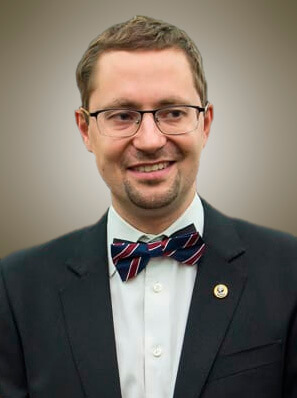
Anatoly Soloviev
In 2005 he defended his thesis “Dynamic clustering in solving geophysical problems” in UIPE RAS for the degree of candidate of physical and mathematical sciences (PhD), specialty 25.00.10 “Geophysics, geophysical methods of search of minerals.”
In 2014 he defended his doctoral thesis “Methods for detection of anomalous events in the time series in the analysis of geophysical observations” in IPE RAS for the degree of doctor of physical and mathematical sciences, specialty 25.00.10.
Was elected Professor of the Russian Academy of Sciences in 2015 and Corresponding member of the Russian Academy of Sciences in 2016.
In October 2018 has been designated as Acting Director of GC RAS.
The list of publications includes more than 50 papers in journals indexed in web of Science and Scopus, more than 100 conference abstracts and more than 20 certificates of state registration of intellectual property.
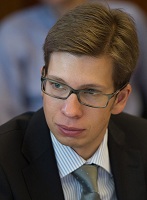
Scientific Secretary
Roman Krasnoperov
In 2002, he entered the Moscow State University of Geodesy and Cartography (MIIGAiK), Department of Geodesy. In 2007 he graduated with honors and was awarded the Degree of Engineer in Space Geodesy. In 2007–2010 he studied at the postgraduate department of MIIGAiK. In 2012 defended his thesis for the PhD degree in physical and mathematical sciences (specialty "Geophysics, geophysical methods of prospecting for minerals") at the Council of the Schmidt Institute of Physics of the Earth of RAS.
Scientific Expertise: Development of data analysis methods for geomagnetic observations. Development of the Russian network of geomagnetic observatories. Application of modern GIS technologies for collection, storage and analysis of data on Earth sciences. Space Geodesy methods’ applications for Earth crust motion and deformation analysis.
Since 2007, at the Geophysical Center of the Russian Academy of Sciences (GC RAS) he held the following positions: from March 2007 to October 2013 – Research scientist at the Laboratory of Geoinformatics; from October 2013 to June 2018 – Senior research scientist, and from June 2018 to present – Leading research scientist at the Laboratory of Geoinformatics and Geomagnetic Studies. Since June 2018 – the Scientific Secretary of the GC RAS.
Since 2009 he participates in the project of development of magnetic observations in Russia and creation of the Russian segment of the international network of magnetic observations INTERMAGNET. Since 2007 he participates in the project on the development of a multidisciplinary analytical GIS on Earth sciences and geoportals of GC RAS.
The list of scientific works includes more than 30 publications in peer-reviewed Russian and international journals and edited volumes and more than 50 reports at Russian and international scientific conferences and assemblies.
From September 2008 to January 2010, held the position of a visiting lecturer at the Moscow College of Geodesy and Cartography of MIIGAiK.
From 2014 to present – member of the Scientific Council of GC RAS. In 2015–2018 was the member of the Working group on international activity of the Federal Agency of Scientific Organizations and Russian Academy of Sciences. In 2011-2018 was the member of the ICSU CODATA Task group “Earth and Space Science Data Interoperability”. In September-October 2010 – Visiting Researcher at the National Geophysical Data Center of the National Oceanic and Atmospheric Administration (NGDC NOAA) (Boulder, Colorado, USA). From 2009 to present – Secretary of the National Geophysical Committee of the Russian Academy of Sciences.
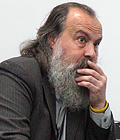
Sergei Agayan
Chief researcher, in 1977 graduated from the MSU Faculty of Mechanics and Mathematics. Later (1977-1980) he undertook postgraduate study at the faculty and in 1982 defended his thesis titled "Elements of Non-Archimedean Theory of Representations" and was awarded the degree of candidate of physical and mathematical sciences.
Research interests: methods of artificial intelligence, algorithms of classification, fuzzy theory of sets and fuzzy logic and their application to geophysical data analysis. S. M. Agayan is one of the founders of "The Discrete Mathematical Analysis", a new approach to studying discrete data, based on artificial intelligence and fuzzy logic. In 2005 he defended the dissertation "The Discrete Mathematical Analysis and Fuzzy Logic in Geophysical Applications" and was awarded the doctor’s degree of physical and mathematical sciences.
Over 40 scientific works of S. M. Agayan are published in leading Russian and international magazines, his results were presented at numerous (about 30) international and Russian conferences.
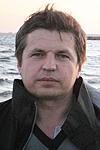
Igor Aleshin
In 1994 after graduate school of Physics department of Moscow State University I.M. Aleshin awarded degree candidate of physics and mathematics, qualification “Theoretical physics”.
From 1994 until now I.M. Aleshin works at the Smidt’s Institute of Physics of the Earth RAS. From 2003 I.M. Aleshin is Head of the Network solution division, from 2005 he is head of the laboratory of Geoinformatics.
Research interests: inverse problems, methods of data collection and processing, high performance computing.
List of publications include over 50 articles in peer-reviewed journals more than 30 conference abstracts and 10 IP’s. I.M. Aleshin was scientific advisor for 2 PhD thesi.
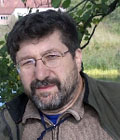
Shamil Bogoutdinov
In 1981 graduated from the MSU Faculty of Computational Mathematics and Cybernetics, specializing in applied mathematics.
Scientific interests: artificial intelligence methods, classification algorithms, fuzzy set theory and fuzzy logic and its application to the analysis of geophysical data. Sh.R. Bogoutdinov is one of the founders of "Discrete Mathematical Analysis" - a new approach to the study of discrete data based on artificial intelligence and fuzzy logic. In 2007 he defended his thesis "Fuzzy logic algorithms for interpretation of geological and geophysical data" and was awarded the degree of candidate of physical and mathematical sciences (PhD).
His list of publications includes more than 30 articles in national and international journals, including peer-reviewed, and more than 30 conference abstracts.
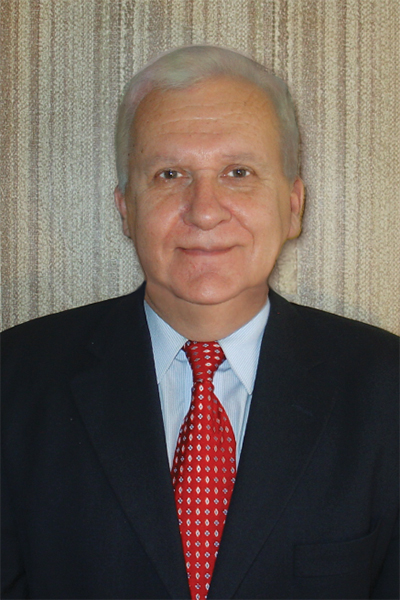
Viktor Getmanov
In 1968 he graduated from the Moscow Engineering Physics Institute. In 1967-1982 he worked in GosNIIAS. In 1974 he defended his thesis for the degree of candidate of technical sciences, in 1978 he was promoted to senior researcher. During his time in GosNIIAS he was in charge of information processing and optimal control of special aviation systems. In 1982 - 1998 he worked at the Institute of Mechanical Engineering (IMASH). In 1992 he defended his thesis for the degree of Doctor of Technical Sciences. During his work in IMASH he was solving tasks of digital processing of measurements of non-stationary waveforms for complex mechanical systems. For several years he worked as a professor teaching students. In 1977-1982 he delivered lectures on "Optimization Techniques" and "Design of Experiments" in MAI and IPK MAP of the USSR.
From 2007 to 2010 he worked as a professor in the department of Moscow State Pedagogical University and delivered lectures on "Operations Research". He obtained the rank of professor in 2000. Since 1993 he has been working as a professor at the "Information and Control" department of MEPhI; his specialization is "Digital Signal Processing". Since December 2010 he has been working at the Geophysical Center RAS as a chief researcher.
Scientific interests: digital processing of signals, methods of analysis of experimental data, methods of digital processing of geophysical data series, methods of optimization and control theory. He is the author of 130 publications and six books.
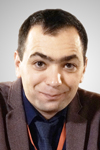
Boris Dzeboev
In 2008 graduated from the Department of Mathematics of the Khetagurov North Ossetian State University in Vladikavkaz. From 2008 to 2011 studied at the post-graduate school of the Geophysical Institute of the Vladikavkaz Scientific Center of the Russian Academy of Sciences. In 2014 defended the thesis "Clustering in Earthquake-Prone Areas Recognition in California and the Caucasus" for the PhD degree in physical and mathematical sciences. In 2021 defended the thesis "System-Analytical Method of Strong Earthquake-Prone Areas Recognition" for the Dr. Sc. degree in physical and mathematical sciences. Member of the RAS Scientific Council for the Study of the Arctic and Antarctic. Member of the editorial board of the "Journal of Volcanology and Seismology".
Scientific interests: computational geophysics, geoinformatics, mathematical methods of artificial intelligence in geophysics, data mining, systems analysis in geosciences, Big Data in geosciences, seismic hazard and seismic risk assessment, earthquake prediction.
Since 2013, works at the Geophysical Center of the Russian Academy of Sciences. Since 2017, holds the position of the Head of the Laboratory of Geophysical Data. In 2021 he was appointed the Deputy Director for Science.
Author of more than 30 publications in high-rank scientific journals.
CV fullPublications
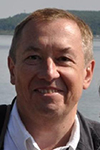
Mikhail Kaban
D.Sc., Principal research scientist.
Mikhail Kaban is a recognized scientist in the field of constructing integrative models of the Earth’s crust and upper mantle.
In 1981, he graduated from the Faculty of Physics at Lomonosov Moscow State University (Geophysical Department). In 1986, he defended his PhD thesis, and in 2003 – his Doctor of Science degree in geophysics. The topic of the latter is "Density Inhomogeneities of the Upper Mantle, Lithosphere Isostasy, and Geodynamics".
Research interests: joint interpretation of the gravity, seismic, and other geophysical and geological data for various applications: construction and interpretation of integrative models of the Earth’s crust and mantle at regional and global scales; modelling of the global mantle dynamics; study of isostasy, rheology, mechanical behaviour of the lithosphere and the stress field induced by lithosphere density inhomogeneities. Development of geophysical software: solution of direct and inverse gravity problems (3D) considering the information provided by other methods; cross-spectral analysis of the gravity field and surface load to determine the effective elastic thickness of the lithosphere.
Based on these methods, 3D models of the lithosphere and upper mantle were constructed for the most part of the Earth. They represent the main physical parameters: density distribution, temperatures, changes in composition of the mantle, as well as the main rheological parameters. It is noteworthy that the global models contain hierarchically more detailed constructions for all continents and their parts. On the basis of the dynamic models he developed, the impact of mantle convection on the continental lithosphere, its stress state and deformations was studied. In particular, he was the first to model the root of the North American craton, which was displaced 800-1000 km in a west-southwest direction by mantle flow.
There were published 125 papers in peer-reviewed international journals and books, 2 monographs, and more than 160 abstracts at international conferences.
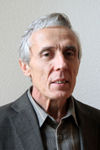
Vladimir Kaftan
Doctor of technical sciences, Professor, principal research fellow at the Laboratory of Geodynamics, deputy chairman of Geodesy Section of the National Geophysical Committee RAS. In 1978 he graduated from the Moscow Institute of Geodesy, Mapping and Aerial Photography (MIIGAiK) majoring in applied geodesy.
Research interests - geodesy, geodynamics, time series analysis and kinematic modeling of natural processes. Author of one monograph (co-authored), tutorials, more than one hundred publications in Russian and international journals, magazines, collections of reports and conference proceedings. Member of the editorial boards of the journals “Geosciences” (e-journal) and Real Estate Cadastre. Researcher of the Russian-Finnish project of bilateral cooperation in the field of geodesy 2006-2011, Project scientist of international scientific cooperation North Geodetic Commission 2010-2011, a researcher on the Russian-Kazakh cooperation project between GC RAS and "EkoGeoMunayGaz" in the field of geodynamic monitoring, scientific consultant at "EkoGeoMunayGaz", a member of the federal roster of experts of scientific and technical sphere, a member of the Expert Council of Russian Federal Property Fund.
Awards: "Excellence in Surveying and Mapping", "Honorary surveyor."
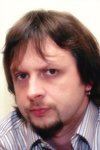
Ernest Kedrov
Graduated from the S. Ordzhonikidze Moscow State Geological Prospecting Academy in 1996 as an engineer and geologist, specializing in gemology. From 1998 he worked at the Schmidt Institute of Physics of the Earth. In 1999 he graduated from the post-graduate school of the S. Ordzhonikidze Moscow State Geological Prospecting Academy. From 2005 till now he works in the Geophysical Center RAS as a senior researcher. In 2007 he defended his Ph.D. thesis "Dynamic calibration of seismic stations of the International Monitoring System of nuclear tests according to natural seismicity data" and became a candidate of physical and mathematical sciences. Since 2017 leading research scientist with the assignment of duties of laboratory of Electrronic Publications head.
He has 26 publications, 8 of them in the last 5 years. Is the deputy editor-in-chief of the electronic journal "Bulletin of the Department of Earth Sciences" (http://onznews.wdcb.ru/), the "Russian Journal of Earth Sciences" (http://rjes.ru/) and the serial publication "Research on geoinformatics: Proceedings of the Geophysical Center of the Russian Academy of Sciences.
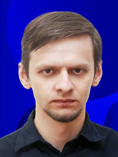
Dmitry Kudin
Senior research scientist, Chief of the Geophysical Monitoring Sector, PhD.
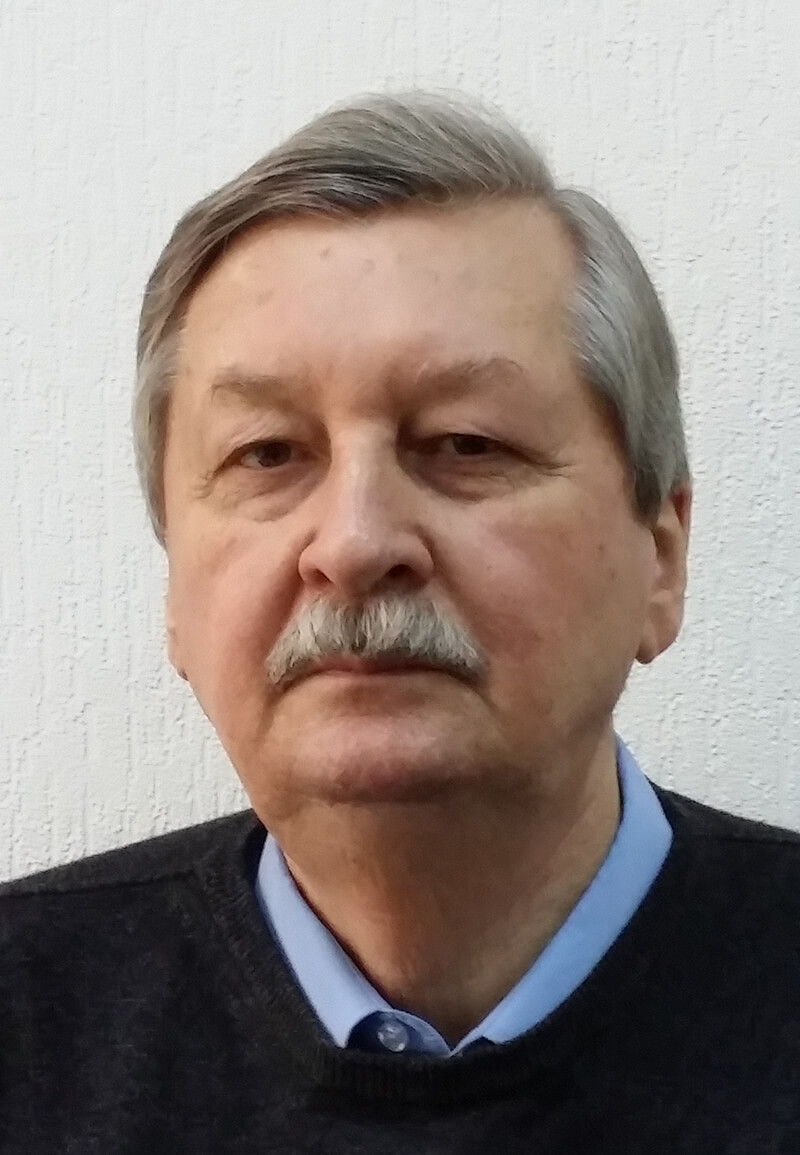
Vladislav Morozov
Graduated from the Geophysical Faculty of the S. Ordzhonikidzhe Moscow Geological Prospecting Institute in 1962. After graduating he worked in the Pechersky geophysical expedition (Vorkuta), and at the Institute of Mineral Raw Materials Synthesis (the USSR Ministry of Geology). Since 1965 he studied mechanical-electric crustal processes at the Schmidt Institute of Physics of the Earth of the USSR Academy of Sciences.
In 1970 V. N. Morozov defended his candidate of science dissertation and was awarded the degree of candidate of physical and mathematical sciences (PhD). Since this period V. N. Morozov successfully developed kinetic concepts of mechanics of deformation and destruction of rocks for solving problems of geomechanics and mining. As a result of scientific and pedagogical activity by V. N. Morozov a new scientific direction in geomechanics and geodynamics was developed, based on kinetics of processes of deformation and destruction of rocks and massifs under the influence of pressure and temperature.
In 1990 V. N. Morozov successfully defended the doctoral dissertation and became Doctor of Engineering. In 1997, the academic title of professor in the specialty "Physical processes of mining" was awarded.
From 1992 V. N. Morozov worked at the Geophysical Center Russian Academy of Sciences. At the present time he conducts research on geodynamic safety of a nuclear fuel cycle. It is the head of the sub-department at GC RAS together with the State Open University. V. N. Morozov is the author of a number of scientific articles, two monographs, state standards and inventions. The list of his scientific works includes more than 280 titles and 5 monographs. V. N. Morozov is Full Member of the Academy of Mining Sciences, the World Ecological Academy, Academy of Science and Business Integration.
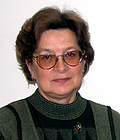
Natalia Sergeeva
Graduated from the geophysical department of the MSU Physical Faculty in 1971. In 1977 graduated from the post-graduate school of the Schmidt Institute of Physics of the Earth. In 1978 defended her PhD thesis. Candidate of physical and mathematical sciences since 1979.
Since 1971 she has been working in the World Data Center for Solid Earth Physics of GC RAS as a specialist in the field of processing, systematizing, storage of geophysical data, development of computer databases, information systems and remote access to information resources.
Research interests — structure of the lower mantle and core of the Earth, density distribution in the Earth’s crust, construction of models of the internal structure of the Earth and terrestrial planets based on the equation of state of matter, research and development of models of the deep structure of the lithosphere of marginal seas and sedimentary basins of the transition zone from the Eurasian continent to the Pacific Ocean on the basis of integrated interpretation of geological and geophysical data.
Author of more than 50 scientific papers.
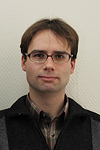
Roman Sidorov
In 2010 graduated from the Geological Faculty of Lomonosov Moscow State University, specializing in geophysical methods for the study of the earth's crust.
Scientific interests: terrestrial magnetism, magnetosphere, geomagnetic activity, solar-terrestrial physics, space weather, geophysical data analysis.
In 2015, he defended a PhD thesis "Filtering methods and algorithms based on approximation models for the geomagnetic field data". R.V. Sidorov is one of the main participants in the GCRAS activities related to the support and expansion of the segment of geomagnetic observatories in the Russian Federation.
R.V. Sidorov's list of publications includes more than 20 articles in Russian and foreign journals and more than 30 conference abstracts.
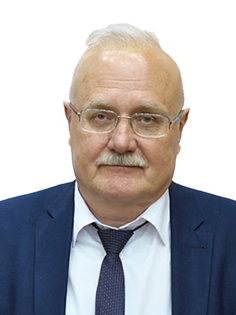
Igor Sheremet
Academician of the Russian Academy of Sciences, well-known scientist in the field of information technology, systems analysis, artificial intelligence, digital economy, cybersecurity, computing and telecommunication systems. Doctor of technical sciences, professor. In 2016 he was elected a Corresponding Member of the Russian Academy of Sciences in the Department of Nanotechnology and Information Technology, and in 2022, Academician of the Russian Academy of Sciences. Author of more than 300 scientific papers, including 25 monographs, some of which were published abroad.
He was awarded the Order for Military Merit, the medal of the Order for Merit to the Motherland, 2nd class. Laureate of the State Prize of the Russian Federation named after Marshal of the Soviet Union G.K. Zhukov (2013) and the Prize of the Government of the Russian Federation in the field of science and technology (2018).
In 1977 he graduated from the Dzerzhinsky Military Academy, where he received a qualification as a military software engineer. In the 1980s proposed a new approach to the formalization and axiomatization of databases and knowledge bases. He developed methods for the associative organization of large databases and knowledge bases, as well as a set of methods and architectural solutions for parallelizing logical inference through its macropipelining, which ensured distributed intelligent processing of intensive heterogeneous information flows. The approach was first successfully implemented in the second half of the 1980s on the EC series mainframes. At the same time, a prototype web client for personal computers was created.
Since the 2000s, Igor Anatolyevich has been developing the theory of recursive multisets and methods of its application for solving problems of system analysis, operations research and digital economy. As part of this direction, he proposed a mathematical toolkit that combines the advantages of classical mathematical programming and modern knowledge engineering — a family of filtering multiset grammars and metagrammars.
He is a co-chairman of the problem group “Promising mathematical tools for applied data-based systems analysis” of the Committee on Data for Science and Technology (CODATA) of the International Council for Science (ISC), deputy chairman of the RAS Committee on Systems Analysis, deputy chairman of the Scientific Council on Robotics and Mechatronics RAS, a member of the Scientific Council of the RAS “Quantum Technologies” and a member of the Scientific Council “Scientific Foundations for the Construction of Computing, Telecommunication and Location Systems” of the RAS. In 2014–2020 he was a member of the Scientific Advisory Committee at the International Institute for Applied Systems Analysis (IIASA). In 2020–2022 was Chairman of the CODATA and IIASA Joint Working Group on Big Data and Systems Analysis.
Since 2019, member of the Presidium of the Higher Attestation Commission at the Ministry of Education and Science of Russia. Chairman of the editorial board of the journal “Cybersecurity Issues”.
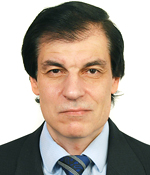
Grygory Steblov
Professor of the Russian Academy of Sciences, a well-known Russian scientist in the field of mathematical geophysics and geodynamics. Author and co-author of 116 scientific papers, including two monographs and one atlas. 3 candidates of sciences were trained under his leadership.
He developed and applied new approaches to the study of modern movements of the lithosphere by satellite geodetic methods and formed a general concept of geodynamic studies of various scales from the global to the regional level. Based on the developed concept, a system of multi-scale satellite geodetic monitoring was created to study modern geodynamics, crustal movements and seismicity on the territory of the Russian Federation. Main research results: updated models of modern global kinematics of lithospheric plates; revealed deviations of modern movements of lithospheric plates, obtained from space geodesy data, from models built earlier on the basis of geological and geophysical data for the Pliocene-Quaternary period; identification and refinement of the configuration of interplate boundaries in the northeastern part of Asia, the northwestern part of the Pacific Ocean. For tectonically active regions, he investigated and established the possibility of solving inverse problems arising from the geodynamic interpretation of geodetic observations. The approaches found made it possible to simulate interplate deformation processes in a number of subduction regions at various stages of the seismic cycle, including preseismic and postseismic, and also to refine the asthenosphere rheology in such regions. A number of results are also associated with the identification of the impact on the ionosphere of the strongest earthquakes, including tsunamigenic ones.
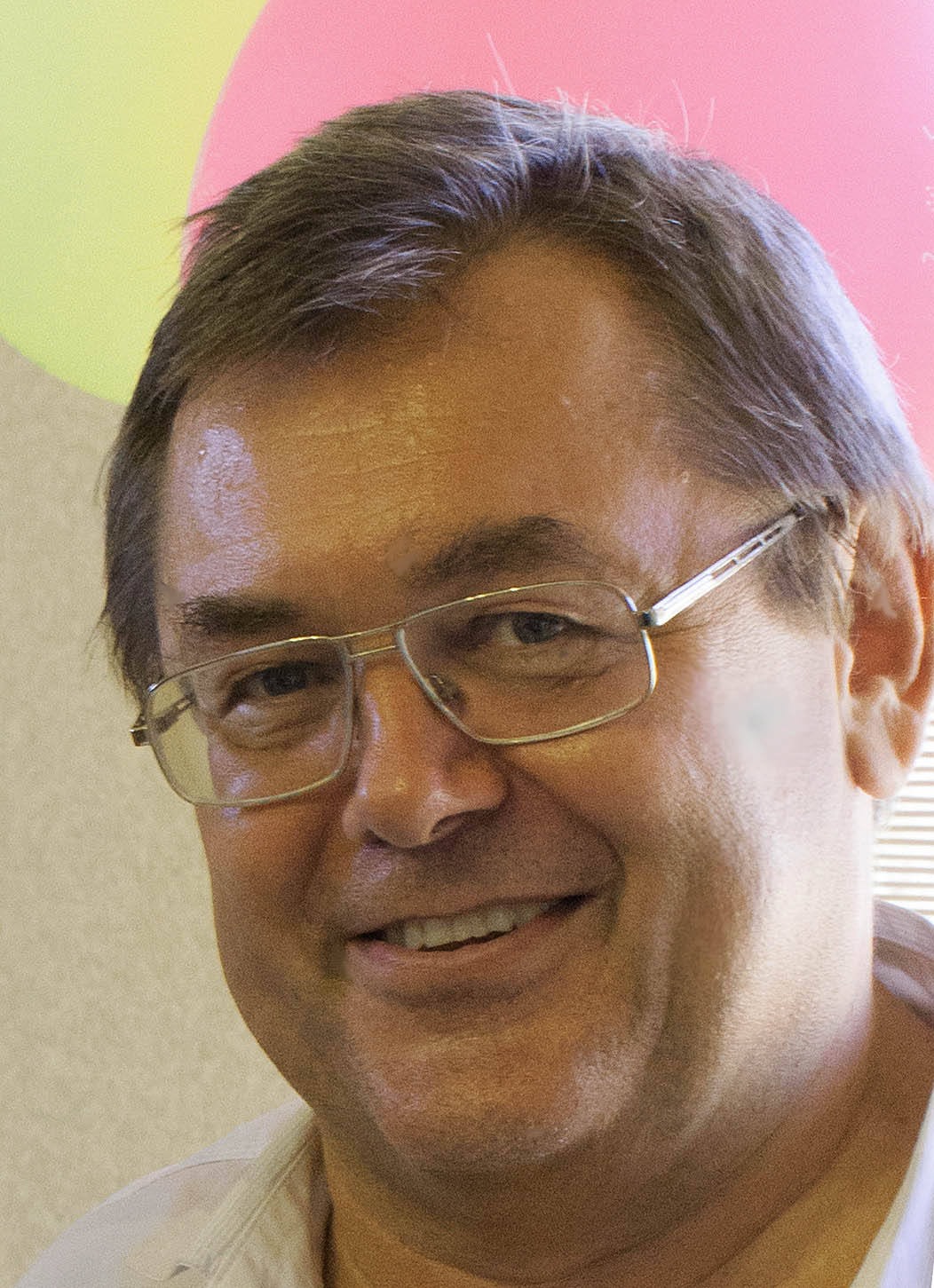
Viktor Tatarinov
Education: S. Ordzhonikidze Moscow Geological Survey Institute
Positions: chief of laboratory of geodynamics
Scientific interests: geodynamics, geo-ecology, sustainability of geological environment, geomechanics
Research: V. Tatarinov began his scientific career in 1980 in "VNIPIpromtekhnologii", a sectoral research institute of the Ministry of Atomic Energy, dealing with the safety of underground mining of uranium deposits based on geomechanical and geophysical methods. In 1993 he defended his thesis. Since 1993 he has been working in the laboratory of geo-ecological informatics of GC RAS. Basic scientific research areas: development of methods for assessing and forecasting geodynamic stability of the geological environment at choosing locations of nuclear fuel cycle facilities. He studied modern geodynamic crustal movements with the use of global navigation satellite systems. During this time geodynamic polygons at the Kalinin and Volgodonsk NPPs, radioactive waste storages of SIA "Radon", storages in the area of the Nizhnekanskiy granitoid massif, etc were organized.
In 2007 he defended his thesis on "Predicting the stability of the geological environment in site selection and operation of nuclear fuel cycle” and received the degree of Doctor of Technical Sciences. He published more than 120 scientific papers in leading Russian and international journals and books, and worked on a series of regulations for Gosatomnadzor.





















